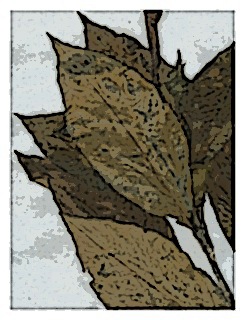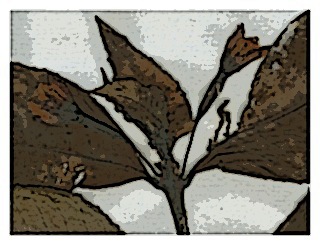
The Genus Fuchsia
Section Verrucosa
(one species)
The single species within this eponymous section, created by Paul E. Berry in 1982, was first described in 1845. It simply means "covered in warts" or "warty".
Name: Fuchsia sect. Verrucosa P.E.Berry, 2004.
Typus: F. verrucosa Hartw. ex Benth.
Section Verrucosa
(one species)
The single species within this eponymous section, created by Paul E. Berry in 1982, was first described in 1845. It simply means "covered in warts" or "warty".
Name: Fuchsia sect. Verrucosa P.E.Berry, 2004.
Typus: F. verrucosa Hartw. ex Benth.
F. verrucosa Hartw. ex Benth.
Venezuela and Colombia. The single species in this section is an infrequent occurrence in wet, shady banks and along streams in the Cordillera Oriental of the Northern Andes from southern Merida in Venezuela to Huila in Colombia, and then on the eastern edge of the Nudo de Pasto in Putumayo at elevations from 1,800 to 3.050 meters (Berry 1982).
 The breeding system is hermaphroditic.
The breeding system is hermaphroditic.
Habit—Erect to scandent, mostly glabrous subshrubs 0.5 to 2 m tall. Branchlets subterete, 2 to 4 mm thick, verrucose, green to dull purple; older stems terete, with light gray tan, finely fissured bark.
Leaves—Opposite, firmly membranous, broadly elliptic to obovate, acute to attenuate at the base, acute to acuminate at the apex, 5 to 16 cm long, 2 to 8 cm wide, dark matte green above, pale or flushed purple below, often with strigose hairs along the veins; midvein prominent below, secondary veins ten to twenty on either side of the midvein, subparallel and anastomosing 1 to 3 mm before the margin to form a distinct submarginal vein; margin glandular-serrulate. Petioles stout, 5 to 22 mm long. Stipules firm to semisucculent, (narrowly) triangular, 2 to 4 mm long, 1 to 2 mm wide, separate or connate, subpersistent.

Flowers—Solitary in upper leafaxils, pedicels firm, spreading to drooping, 10-40 mm long, ovary oblong-cylindric, tetragonous, 10 to 12 mm long, 2.5 to 3 mm wide, lustrous light green, floral tube obconic, 3 to 6 mm long, 2.5 to 3 mm wide at the base, 4 to 4.5 mm wide at the rim, subglabrous inside and outside, sepals lance-oblong, acute at the apex, 7 to 11 mm long, 2 to 4.5 mm wide at the base, spreading to recurved at anthesis. Tube and sepals bright orange or scarlet, petals red orange, oblongobovate, 8 to 9 mm long, 5 to 6 mm wide, obtuse to subacute at the apex, margin more-or-less undulate, central nerve more-or-less thickened, spreading and convolute at anthesis. Nectary green and composed of four distinct antesepalous, ridged lobes about 1.5 mm high, about 0.5 mm thick, adnate to the base of the floral tube, filaments light red, 2 to 3 mm and 1 to 1.5 mm long, anthers broadly reniform, 1.5 to 2.5 mm long, 1.5 to 2 mm wide, white, style glabrous, stout, red, 6 to 8 mm long, stigma clavate, slightly four-cleft at the apex, 2.5 to 4 mm long, about 2 mm wide, light pink to cream, barely exserted beyond the anthers.
 Fruit—The berry is tetragonous until maturity, ellipsoid or broadly cylindric when ripe, 20 to 25 mm long, and about 10 mm thick.
Fruit—The berry is tetragonous until maturity, ellipsoid or broadly cylindric when ripe, 20 to 25 mm long, and about 10 mm thick.
Seeds—The seeds are 1.4 to 1.6 mm long and about 0.7 mm wide.
Chromosomes—Gametic chromosome number n = 22.
Authors—Hartweg ex Benth 1845. Berry 1982.
Original publication—Pl. Hartw. 178 1845.
Synonyms—F. perbrevis J. M. Johnston 1925; F. verrucosa var. tamaensis Steyermark 1952.
Herbarium Specimens—Kew 1, Kew 2; Edinburgh; New York; Smithsonian (as F. verrucosa var. tamaensis).
Venezuela and Colombia. The single species in this section is an infrequent occurrence in wet, shady banks and along streams in the Cordillera Oriental of the Northern Andes from southern Merida in Venezuela to Huila in Colombia, and then on the eastern edge of the Nudo de Pasto in Putumayo at elevations from 1,800 to 3.050 meters (Berry 1982).

Habit—Erect to scandent, mostly glabrous subshrubs 0.5 to 2 m tall. Branchlets subterete, 2 to 4 mm thick, verrucose, green to dull purple; older stems terete, with light gray tan, finely fissured bark.
Leaves—Opposite, firmly membranous, broadly elliptic to obovate, acute to attenuate at the base, acute to acuminate at the apex, 5 to 16 cm long, 2 to 8 cm wide, dark matte green above, pale or flushed purple below, often with strigose hairs along the veins; midvein prominent below, secondary veins ten to twenty on either side of the midvein, subparallel and anastomosing 1 to 3 mm before the margin to form a distinct submarginal vein; margin glandular-serrulate. Petioles stout, 5 to 22 mm long. Stipules firm to semisucculent, (narrowly) triangular, 2 to 4 mm long, 1 to 2 mm wide, separate or connate, subpersistent.

Flowers—Solitary in upper leafaxils, pedicels firm, spreading to drooping, 10-40 mm long, ovary oblong-cylindric, tetragonous, 10 to 12 mm long, 2.5 to 3 mm wide, lustrous light green, floral tube obconic, 3 to 6 mm long, 2.5 to 3 mm wide at the base, 4 to 4.5 mm wide at the rim, subglabrous inside and outside, sepals lance-oblong, acute at the apex, 7 to 11 mm long, 2 to 4.5 mm wide at the base, spreading to recurved at anthesis. Tube and sepals bright orange or scarlet, petals red orange, oblongobovate, 8 to 9 mm long, 5 to 6 mm wide, obtuse to subacute at the apex, margin more-or-less undulate, central nerve more-or-less thickened, spreading and convolute at anthesis. Nectary green and composed of four distinct antesepalous, ridged lobes about 1.5 mm high, about 0.5 mm thick, adnate to the base of the floral tube, filaments light red, 2 to 3 mm and 1 to 1.5 mm long, anthers broadly reniform, 1.5 to 2.5 mm long, 1.5 to 2 mm wide, white, style glabrous, stout, red, 6 to 8 mm long, stigma clavate, slightly four-cleft at the apex, 2.5 to 4 mm long, about 2 mm wide, light pink to cream, barely exserted beyond the anthers.

Seeds—The seeds are 1.4 to 1.6 mm long and about 0.7 mm wide.
Chromosomes—Gametic chromosome number n = 22.
Authors—Hartweg ex Benth 1845. Berry 1982.
Original publication—Pl. Hartw. 178 1845.
Synonyms—F. perbrevis J. M. Johnston 1925; F. verrucosa var. tamaensis Steyermark 1952.
Herbarium Specimens—Kew 1, Kew 2; Edinburgh; New York; Smithsonian (as F. verrucosa var. tamaensis).